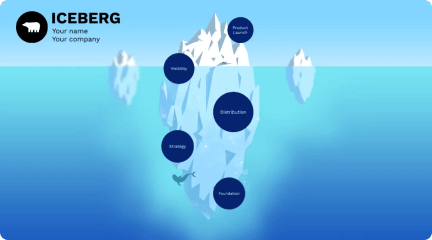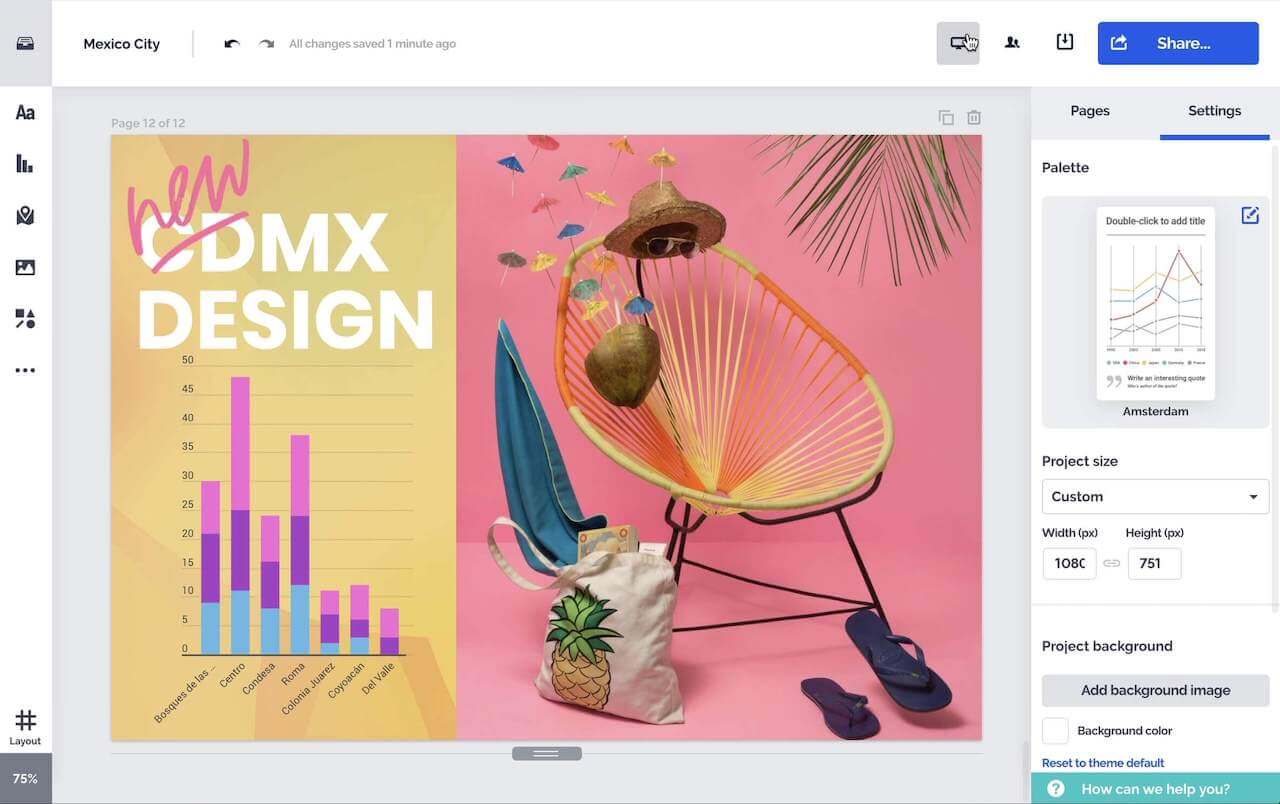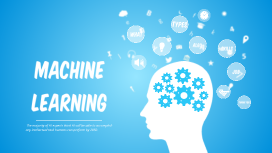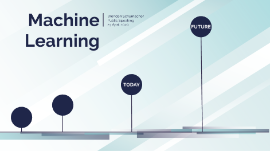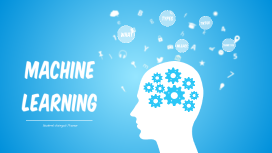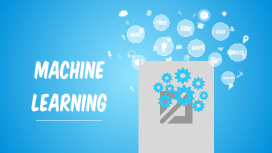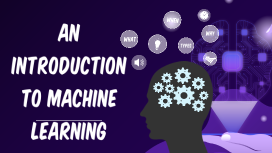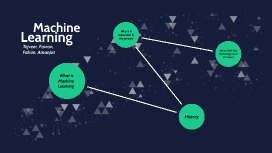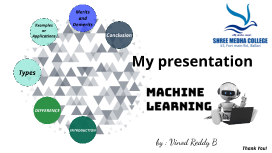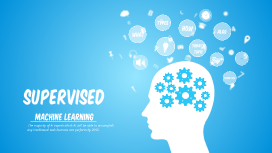Machine Learning Presentation
Transcript: machine learning what is machine learning? WHAT definition Machine learning is a branch of computer science, primarily artificial intelligence, which focuses on the use of data and algorithms to learn the way that humans recieve information. AI vs. Machine Learning What is Artificial intelligence(ai) ai First used in 1956 by John McCarthy, AI involves machines that can perform tasks the same way a human can like understanding languages, recognizing object and sound, learning, problem solving etc. Artificial intelligence machine learning Machine Learning is another way of using A.I. Being able to learn without straight programming is Machine Learning in a nutshell. We can use AI without using machine learning, but this would require building millions of lines of codes with complex rules and decision-trees. machine learning machine learning hierarchy ml types Supervised, Unsupervised, reinforcement learning Supervised Supervised Mainly used by orginizations to solve real world problems, supervised learning is defined by its use of labled datasets to train other algorithims to classify information or predict outcomes. Supervised learning uses traingsets that include inputs and outputs, allowing it to learn over time. unSupervised The way Unsupervised Learning works is unSupervised Supervised Mainly used for orginizations to solve real world problems, supervised learning is defined by its use of labled datasets to train other algorithims to classify information or predict outcomes. Reinforcement how machine learning work? how supervised learning supervised learning Supervised Learning uses input and output variables. Using supervised learning, machine learning algorithms learn the difference from input to output variables and their functions. unsupervised learning unsupervised learning Unsupervised Learning is when there are only data points, and the whole goal of Machine Learning is to learn about those data points. Meaning there is no right or wrong for learning. reinforcement learning reinforcement learning Using this algorithm, the machine is trained to make specific decisions. It works this way: the machine is exposed to an environment where it trains itself continually using trial and error. The machine learns from past experience and tries to capture the best possible knowledge to make accurate business decisions Different machine learning algorithms algo In machine learning there's something called "No free Lunch" theorem.In a nutshell,it means no one algorithm works for every problem. Find here commonly used machine learning algorthms Linear Regression Logistic Regression Decision Tree SVM Naive Bayes kNN K-Means Random Forest Dimensionality Reduction Algorithms Gradient Boosting algorithms GBM XGBoost LightGBM CatBoost WHY Why machine learning is important ? find here Machine learning has enhanced our ability to perform almost every intellect task by replacing or significantly augmenting older approaches. This includes: Control tasks Vision tasks Language tasks Machine learning creates a world of machines that can work tirelessly, innovate, and improve themselves. It reduces both Time and cost by provide automation. Automation trend Intelligent business processes Digital assistants and bots Video surveillance Email spam and malware filtering Product recommendation Online Fraud detection Movie recommendation on Netflix Search Engine result refining Smart cars application of machine learning Ml based products and projects ml products skills required in machine learning Understanding the fundamentals of statistics, optimization, and building quantitative models and Understanding how models and data analysis actually apply to products and businesses. Knowing programming proficiency and understand the basics of system design. Working with large data sets Fundamental understanding and technical proficiency in atleast one area of this field. skills THANK YOU!! THANK YOU - Ankit Raj



